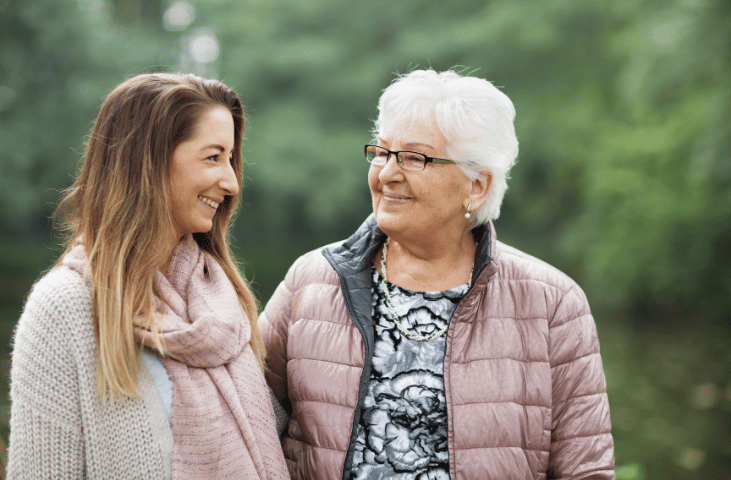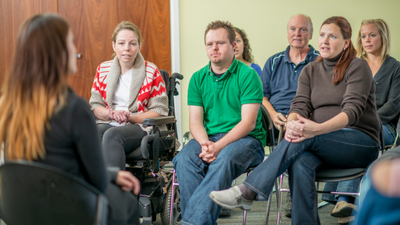Safeguarding Adults at Risk – What does it mean?

Estimated reading time: 5 minutes
Safeguarding Adults at Risk
When we think of safeguarding, our minds often automatically paint a picture of protecting the welfare of children and young people. But there are a large number of adults who require safeguarding procedures to protect them from mental and physical harm. From 2020 – 2021, there were an estimated 498,260 concerns of abuse raised that involved safeguarding adults at risk.
Though the official, contemporary term is ‘adults at risk’, you will find the term ’vulnerable adults’ used on a lot of official documents and the two phrases mean the same thing.
Just like with children and young people, abuse against adults can take many forms – including physical, psychological, sexual, and discriminatory. There are, however, some forms that are more exclusive to adult victims. These may be related to their career, marriage, or financial situation.
Despite some differences, the basis of safeguarding adults remains the protection of the health, wellbeing and human rights of those at risk – enabling them to live safely. Adult safeguarding goes a little further in providing additional support for people who need it to help them live independently.
Who is at Risk?
Defining an adult at risk can be tricky. After all, everyone, no matter how old they are, will need help at some point in their life. Specifically though, adults considered ‘vulnerable’ or ‘at risk’ are those who are at an increased risk of abuse or neglect as they are unable to protect themselves against significant harm or exploitation. Adults can be abused in a variety of different locations. These include:
- Their own homes
- Care homes
- Workplaces
- Hospitals
- Public places
The most common type of risk concluded by the previously-mentioned 2020-21 study was Neglect and Acts of Omission. This accounted for 30% of all risks. The most common location of these risks was the person’s own home at 50%.
Though care and protection are vital, safeguarding adults also means understanding that those at risk need to be allowed as much autonomy over their own lives as possible. The Mental Capacity Act outlines the process which needs to be followed to determine whether an adult is capable of making choices for themselves.
Defining ‘Vulnerable Adults’ and ‘Adults at Risk’
The definition of a ‘vulnerable adult’ officially came about in ‘No Secrets’, a guidance document on developing and implementing polices and procedures to protect vulnerable adults. Published in 1997, it was a written commitment from the UK government to provide greater protection to victims and witnesses. It was eventually introduced in the year 2000, encouraging organisations to work together to protect vulnerable adults from abuse.
The definition from ‘No Secrets’ was used in all safeguarding vulnerable adults policy and procedures until it was replaced with the new definition in 2014.
The Care Act 2014 was and remains a hugely important piece of legislation in adult safeguarding. Applying to England, it sets out how an individual’s care and support needs should be met, and defines the responsibilities of local authorities – including the NHS.
The act sets out statutory responsibilities for the care and support conducted between health and local authorities. The two must work in partnership to ensure the safety and wellbeing of all adults at risk – shifting the focus from response to prevention. This means preventing abuse and neglect from occurring at all.
The Process of Safeguarding Adults
There are six key principles that apply to adult safeguarding work – they’re relevant to all sectors and settings. The principles relate to taking the best care possible of the adult and ensuring they are kept from abuse, but also understanding that actions cannot be intrusive on the autonomy of the person at risk. These are:
- Empowerment – People being supported and encouraged to make their own decisions and informed consent.
- Prevention – It is better to act before harm occurs.
- Proportionality – The least intrusive response appropriate to the risk presented.
- Protection – Support and representation for those in greatest need.
- Partnership – Local solutions through services working with their communities. Communities have a part to play in preventing, detecting and reporting neglect and abuse.
- Accountability – Accountability and transparency in delivering safeguarding.
These safeguarding principles, along with procedure outlined in legislation, is meant to provide the framework and fundamentals for those with the tools to help protect those at risk. This guide from the Northern Ireland Adult Safeguarding Partnership explains how it starts at prevention and early intervention, through to risk assessment and management – including investigation.
At all stages, safeguarding intervention aims to provide appropriate information, supportive responses and targeted services which involve specialists.
Safeguarding Adults Training
Our Safeguarding Adults online course is written for professionals who require safeguarding training for adults that are at risk.
This safeguarding course introduces the applicable legislation and guidance, signs, and indicators of abuse and how to respond to concerns. If you would like to look into safeguarding vulnerable adults training for yourself or your organization, you can also get in touch with our friendly customer service team by calling us on 01327 552030 emailing us at hello@smarthorizons.co.uk, or using the live chat feature on our website.




